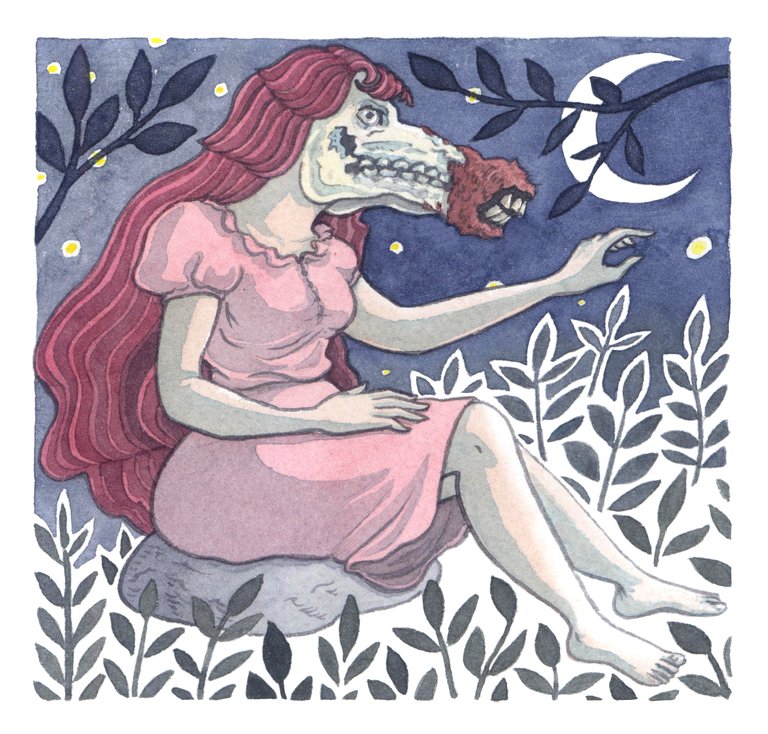
By Ana Santiso.
Watercolor on paper.
12,5 cm x 13 cm.
Registration: cb958d0373334c57ba3a6fa9c573f40910956178f0563778b6f3324dcdb24c29
Token ID: 17567822456058468687
CREATURE: Being monstrous that appears at night on the roads to the flirting men who travel alone on horseback. Its initial appearance is that of a very beautiful woman, with large black eyes, long curly hair and intensely red lips, dressed completely in black or white. It convinces the men to take her, and later, when the man turns to lasciviously contemplate it, the Macihuatli is transfigured in its true form: its head has become the skull of a horse, with rotten flesh and glaring eyes.
Then the Macihuatli clings firmly to the rider, and the horse runs away terrified until all are lost in the distance. The rider will appear later dead and with eyes open or out of their orbits.
According to tradition, the best way to avoid this outcome is to bring, as long as you travel at night, a hat and some mustard seeds. The hat, when shown face up, leaves the Macihuatli astonished, moment that it is necessary to take advantage of to throw the seeds to him. The monster will try in vain to collect them, and it will not stop until dawn, when it will disappear.
CULTURE: A language of great diffusion in pre-Columbian times, Nahuatl became the most spoken language in Central America during the Mexica Empire (also called Aztec), which adopted it as a lingua franca. During the Spanish occupation the colonial power also used Nahuatl as a communication language with all the indigenous peoples, even propagating it to communities that had never used it. However, the expansion of Spanish was little by little displacing the native languages.
Indigenous peoples, traditionally rural and self-sufficient, preserved their traditions and culture with vigor until the modernizing reforms of the 20th century, especially those that deprived them of their communal lands and threw them into rural wage labor, or overcrowded cities.
Currently Nahuatl, still the first of the indigenous Mexican languages, is spoken only in small self-sufficient rural communities. The Macihuatli, on the other hand, continues to appear on the roads throughout the country.
CURRENT POPULATION (Náhualt speakers): 1.725.620
Source
Plagiarism is the copying & pasting of others work without giving credit to the original author or artist. Plagiarized posts are considered spam.
Spam is discouraged by the community, and may result in action from the cheetah bot.
More information and tips on sharing content.
If you believe this comment is in error, please contact us in #disputes on Discord
You're easy to trigger, from what I see. Tarasca has an account in Medium and also in Steem. We have posted the same post on both social networks, yes. Any problem?
Hi! I am a robot. I just upvoted you! I found similar content that readers might be interested in:
https://medium.com/@tarasca_dao/macihuatli-the-avenger-of-women-53694856ba6e